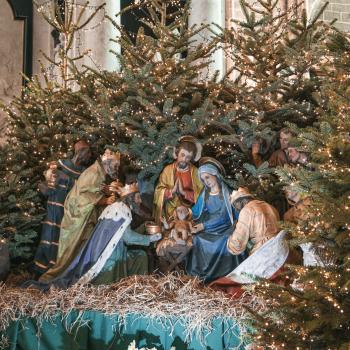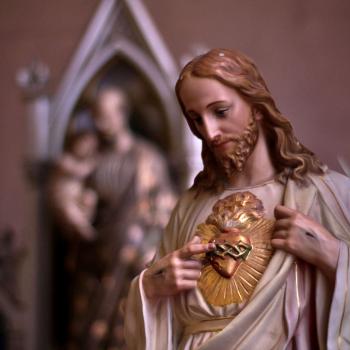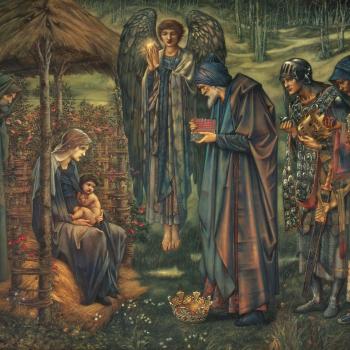It’s Easter week and if you attend church services on Sunday, you’ll likely hear the story of the resurrection of Jesus. It goes something like this: Jesus was crucified, he died on the cross, and was buried—and on the third day, Easter Sunday, he miraculously rose from the dead. But what really happened on that day over 2,000 years ago?
As it turns out, there isn’t one story about the events surrounding Jesus’s resurrection, there are several. In the Bible, there are actually two variations of the tale. One most churchgoers know about appears in the Gospel of John, but the Gospels of Luke and Mark tell a different story. And then there are a few stories from the Gnostic Gospels that paint a different picture altogether.
“Jesus, is that you?” The resurrection as reported by Luke and Mark.
The Gospel of John (John 20:24-27) contains what is probably the best-known narrative of Jesus’s resurrection. It features the doubting Thomas telling his fellow disciples “unless I see the nail marks in his hands and put my finger where the nails were, and put my hand into his side, I will not believe.” At which point Jesus appears as a flesh-and-blood human being, inviting Thomas to “put your hand into the wound in my side. Don’t be faithless any longer. Believe!”
But in both the Gospels of Luke and in Mark (16:11), the story is a little stranger. Each of these gospels report that Jesus appeared “in another form.” It’s not the Jesus they knew, for he seems to have returned in the body of another man. According to Luke’s version, the disciples were deeply troubled after the death of Jesus and meet a man while walking on the road to Emmaus. They invite the man to dinner, at which point, they (shockingly) recognize him as Jesus.
When he was at the table with them, he took bread, gave thanks, broke it and began to give it to them. Then their eyes were opened and they recognized him, and he disappeared from their sight. ~Luke 24:30-31
Jesus was there one second, gone the next! More a spirit than an actual living and breathing person. And while this story may sound unusual, it isn’t the only instance where a devoted disciple does not immediately recognize the resurrected Jesus. It also happens in John, just prior to the doubting Thomas passage.
At John 20:15, it’s reported that Mary Magdalene, who stayed with Jesus at the crucifixion site after his male followers had abandoned him, went to the tomb of Jesus only to find it empty. A man passes by her who she does not recognize. Mary assumes it is the “gardener” and that he has moved the body. It’s not until he passes by her and calls her by name that Mary realizes this man is the resurrected Jesus.
What’s going on here? How could those closest to Jesus not recognize him? Could it have been a case of mistaken identity? Was Jesus shapeshifting into the bodies of other human beings? Or perhaps these were just colorful tales and the truth can be found in texts not included in the Bible.
The Gnostic Gospels tell a very different story of the Resurrection.
As Elaine Pagels points out in her book The Gnostic Gospels, hearing the Bible’s resurrection stories one might think that Jesus literally came back to life as an actual human being.” But Gnostic Christians interpreted the resurrection in a much different way.
Gnostics believed that Jesus was not physically brought back to life but that those who encountered Jesus experienced his presence on a spiritual level. Pagels tells us the Gnostics believed these encounters with Jesus occurred “in dreams, in ecstatic trance, in visions, or in moments of spiritual illumination.” To this point, in several gnostic texts, Jesus appears not in a physical form but in a spiritual one. Pagels writes:
- In the Gospel of Mary, Mary Magdalene claims that she saw Jesus not walking by her at the gravesite, but in a vision. She later claims to “experience his continuing presence” in the days that follow.
- In the Apocalypse of Peter, the apostle Peter sees Jesus while in a trance, surrounded by a bright field of light, as well as “invisible angels.” Jesus tells Peter “I am the spirit (of the mind), filled with radiant light.”
- In The Wisdom of Jesus Christ, the disciples are gathered on a mountain after Jesus’ death. In this tale, “Jesus appeared to them not in his original form but in the invisible spirit. His appearance was that of a great angel of light.” He speaks to the disciples and offers to teach them “the secrets of the universe.”
Importantly, the Gnostic writers did not dismiss the visions as mere fantasies or hallucinations. Instead, they saw the resurrection as “not a unique event in the past … it symbolized how Christ’s presence could be experienced in the present.” Pagels explains that the Gnostics believed that:
The disciples themselves often misunderstood what Jesus said: those who announced that their dead master had come back physically mistook a spiritual truth for an actual event.
Did Jesus really return from the dead as a flesh-and-blood person? Or was it his spirit that returned to grace his disciples? Maybe it really doesn’t matter. What seems more important, is that we still celebrate his resurrection, in whatever form it came in. There is life after death for Jesus—and perhaps for all of us.
This column combines 2 previously published stories on the resurrection into a single post.














